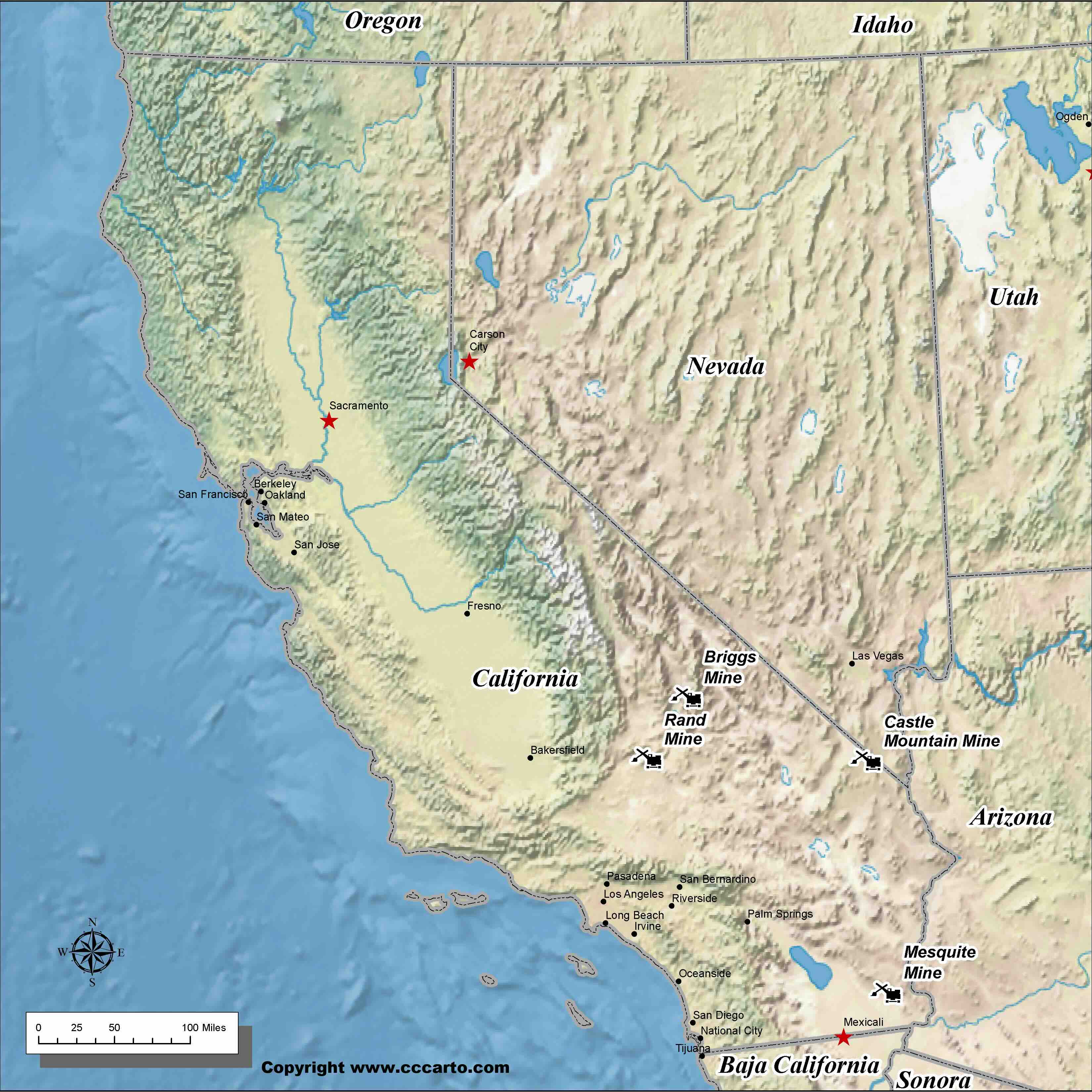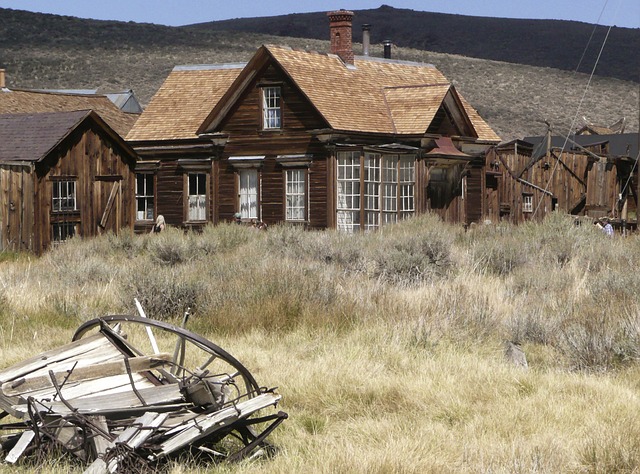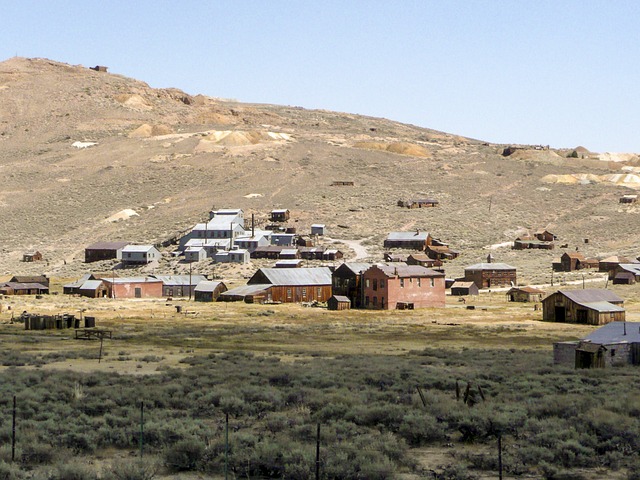
California Goldmines
Initially, individual miners and small groups were the first to engage in gold mining, using simple tools like pans, rockers, and sluices to extract gold from rivers and streams. However, as the rush intensified, larger corporations and mining operations began to dominate. Companies like the California Gold Mining Company and the Mariposa Mining Company played significant roles in organizing and capitalizing on the gold rush.
Several regions in California became renowned for their productive mines. The Sierra Nevada foothills, particularly around Grass Valley, Nevada City, and Downieville, were prolific in both placer and hard rock mining. The Mother Lode region, stretching roughly from Mariposa to El Dorado counties, also yielded substantial amounts of gold.
Major mines in California included:
• Sutter's Mill (where the first gold was discovered)
• Grass Valley Mine (a major hard rock mine)
• Malakoff Diggins (known for hydraulic mining)
• Homestake Mine (produced substantial amounts of gold)
• Empire Mine (one of the oldest, largest, and richest gold mines)
Types of mining varied over time, reflecting technological advancements and environmental impacts:
• Placer Mining: Initially, miners used pans, rockers, sluices, and later dredges to extract gold from rivers and streams.
• Hydraulic Mining: Used high-pressure water jets to wash away hillsides and extract gold from gravel deposits.
• Hard Rock Mining: Involved digging tunnels and shafts to reach gold-bearing quartz veins deep underground.
• By-product Mining: Extracted gold as a by-product of other metals like copper and silver.
The most successful methods varied by era and region, with hydraulic mining becoming particularly widespread and productive in the mid•19th century due to its efficiency in extracting gold from large volumes of gravel.
Famous and rich gold strikes include:
• Mariposa Vein: Discovered in 1849, it was one of the earliest and richest gold strikes.
• Mother Lode: A 120-mile-long gold-bearing quartz vein that yielded immense wealth.
• Grass Valley: Known for its deep, rich gold-bearing quartz mines.
Cities such as San Francisco, Sacramento, and Stockton grew rapidly due to their proximity to the gold fields and their roles as supply centers for miners.
Gold mined in California is typically sold through various channels, including refineries, dealers, and directly to consumers or investors. Much of it ends up in the global gold market, where it is used for jewelry, investment, and industrial purposes.
Today, gold mining in California is regulated and operates under strict environmental laws to mitigate past damages. While some mines have closed due to economic factors or environmental concerns, others remain active, albeit on a smaller scale compared to the heyday of the gold rush.
Environmental costs of historic mining include deforestation, erosion, and mercury pollution from early extraction methods. Efforts continue to reclaim and restore affected areas.
Regarding living conditions and earnings, modern miners in California typically earn competitive wages, though exact figures vary based on the type of mining and employer. Safety and environmental regulations ensure better working conditions compared to the 19th century.
Several gold coins have been minted in California, notably during the Gold Rush era when private mints produced coins like the California Gold Rush fractional coins.
Overall, California's gold mining legacy is rich with history, economic impact, and ongoing environmental stewardship.
Major California Gold Mining operations are listed below and on the above map. Smaller gold mining mine operations which are not show or listed are the - Bully Choop Mine, Hayden Hill Mine, Cole Cash Mine, Sixteen to One Gold Mine, Red Ledge Mine, Hoffman Mine, Timm Mine, Cal Sierra Mine, McLaughlin Mine Sutter Creek Mine and the Colorado Quartz Mine.
Mesquite Gold Mine - The Mesquite mine is one of the largest open pit gold mines in the United States. The mine is located in Imperial County, California and is above Highway 78. The mine has some unique neighbors located on each side of it. To the south is the 4000 acre Mesquite Landfill and to the north is the Chocolate Mountains Aerial Gunnery Range. The mine is now run by NewGold and was closed for awhile until NewGold re-opened it in 2007.
Briggs Gold Mine - The Briggs Mine is a open pit mine in Inyo County, California. The mine opened in 1995 and is run by Briggs. The mine is located about 50 miles east of the town of Ridgecrest near Death Valley in the neighboring Panamint Valley.
Rand Mine - Historic mine and mining region near Johannesburg/Randsburg area of California. The famous mine is now owned by the Glamis Gold Inc. on BLM land. Much of the land around this mine is on BLM land and can be still mined today. The three mines that originally made up the Rand Mine and the Yellow Aster, Lamont, and the Baltic. Dozens of other mines and claims are in the area including the Little Butte Mine, Gold Crown Mine, King Solomon Mine, Lamont Pit, Oro Fino, Treasure Hill Mining and many other claims and gold mines. You can still stake and locate a claim or site with the BLM.
Castle Mountain Mine - This is a abandon open pit gold mine that was once owned and operated by the Viceroy Resource Company. The mine is in far eastern San Bernardino County, California near the Nevada State border. The location of this mine can be found here. This desert location is a popular spot for people that have four wheel drive vehicles and like visiting history ghost and mining towns and points of interest in this extreme desert region near the Mojave National Preserve. Other small historic mines near Castle Mountain Mine include the historic gold mining town of Vanderbilt, Morning Star Mine, Standard Mine No. 2. and many other smaller shaft mines.
A map showing all major and minor gold mines in California can be viewed at the state geologic website.
More interesting California gold mining facts and pictures can be found at the California Geological Survey page.


Source: U.S. Geological Survey, Major mineral deposits of the world, Open-File Report 2005-1294. Data portal